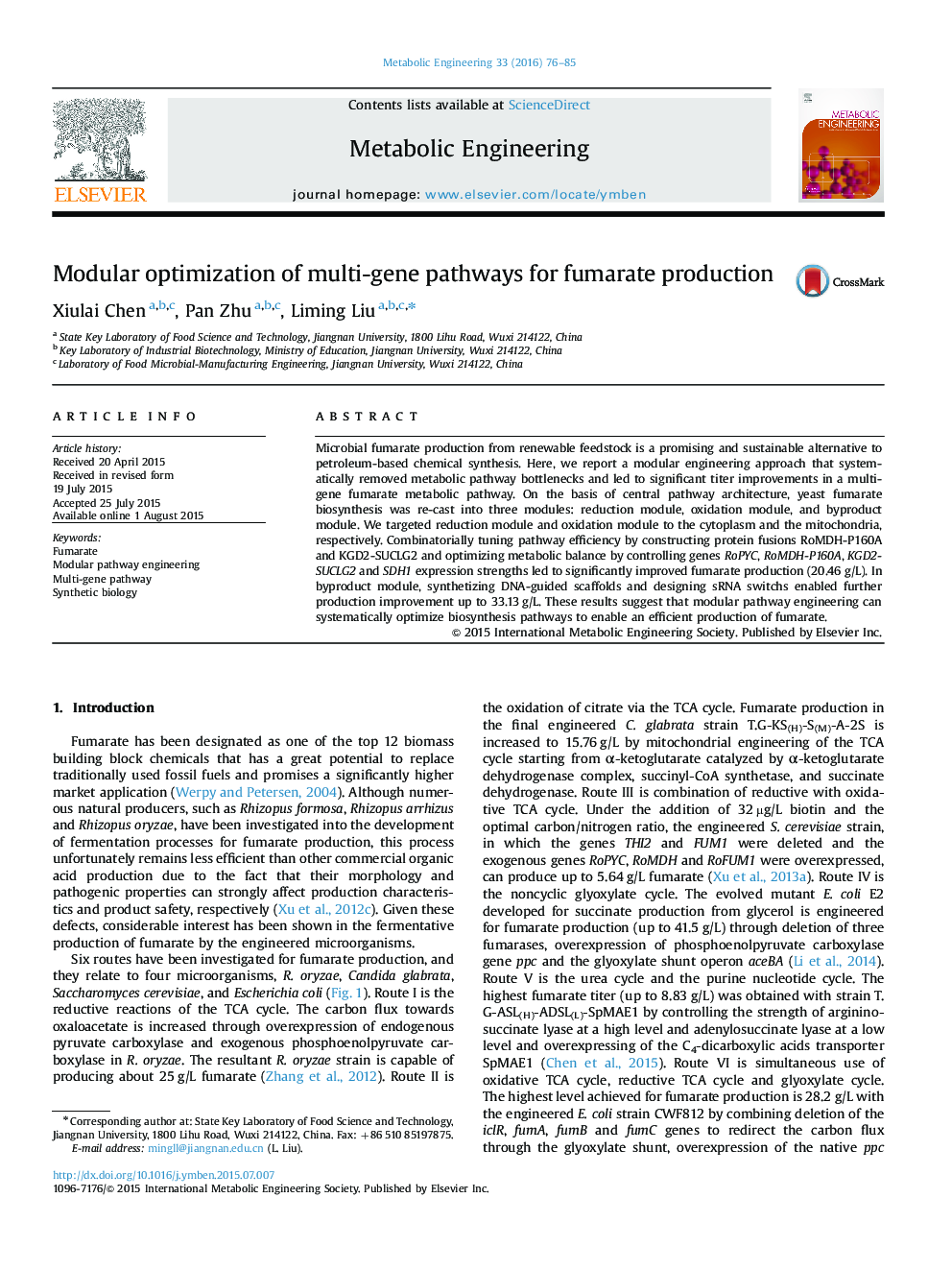| Article ID | Journal | Published Year | Pages | File Type |
|---|---|---|---|---|
| 31478 | Metabolic Engineering | 2016 | 10 Pages |
•Modular pathway engineering was used to produce fumarate.•Fusion proteins were constructed to improve the production of fumarate.•Gene expression strengths cassettes were optimized to increase fumarate.•DNA-guided scaffolds and RNA switchs were used to enhance fumarate production.•The final strain TGFA091-16 could produce 33.13 g/L fumarate.
Microbial fumarate production from renewable feedstock is a promising and sustainable alternative to petroleum-based chemical synthesis. Here, we report a modular engineering approach that systematically removed metabolic pathway bottlenecks and led to significant titer improvements in a multi-gene fumarate metabolic pathway. On the basis of central pathway architecture, yeast fumarate biosynthesis was re-cast into three modules: reduction module, oxidation module, and byproduct module. We targeted reduction module and oxidation module to the cytoplasm and the mitochondria, respectively. Combinatorially tuning pathway efficiency by constructing protein fusions RoMDH-P160A and KGD2-SUCLG2 and optimizing metabolic balance by controlling genes RoPYC, RoMDH-P160A, KGD2-SUCLG2 and SDH1 expression strengths led to significantly improved fumarate production (20.46 g/L). In byproduct module, synthetizing DNA-guided scaffolds and designing sRNA switchs enabled further production improvement up to 33.13 g/L. These results suggest that modular pathway engineering can systematically optimize biosynthesis pathways to enable an efficient production of fumarate.
